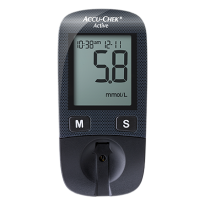How to use Accu-Chek® Active with Softclix
Description
Accu-Chek® meter is a useful tool for simple and safe testing that is integrated into your daily life thanks to its easy handling and capacity storage of up to 500 new results for your numbers tell your story.
We invite you to watch this video to learn how...
More Videos

